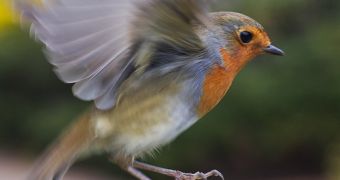Many have wondered how do birds manage to migrate every year and not get lost on the way, and it seems that their navigation system is based on Earth's magnetic field.
This mechanism, called magnetoreception has been investigated by a team of researchers from Oxford University and Singapore, and they concluded that it is linked to chemical reactions inside the birds' eyes.
After analyzing data from an experiment by Oxford and Frankfurt scientists on robins, the researchers believe that this navigation system uses quantum coherence.
Erik Gauger of Oxford University's Department of Materials, and an author of the paper, explained that “quantum information technology is a field of physics aimed at harnessing some of the deepest phenomena in physics to create wholly new forms of technology, such as computers and communication systems.
“Progress in this area is proving to be very difficult because the phenomena that must be harnessed are extremely delicate.
“It would normally be thought almost inconceivable that a living organism could have evolved similar capabilities.”
Robins navigate on long migration routes to Scandinavia and Africa and back, every year, and the experiment on them showed that the birds can be disrupted by very small levels of magnetic 'noise'.
This noise is actually a small oscillating magnetic field, that disabled the birds' compass sense, but once it was removed, everything went back to normal.
Because the amount of noise is so small, the researchers concluded that the only system which would be sensitive to it, is one with components operating at quantum levels.
“Coherent quantum states decay very rapidly, so that the challenge is to hold on to them for as long as possible,” explained co-author Simon Benjamin from Singapore.
“The molecular structures in the bird's compass can evidently keep these states alive for at least 100 microseconds, probably much longer.
“While this sounds like a short time, the best comparable artificial molecules can only manage 80 microseconds at room temperature.
“And that's in ideal laboratory conditions.”
The two researchers now hope that better understanding the birds' quantum states will allow scientists to imitate them and contribute to the development of practical quantum technologies.
This investigation will be presented in a forthcoming article in Physical Review Letters.

 14 DAY TRIAL //
14 DAY TRIAL //